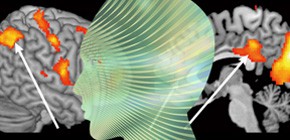
Clarifying the role of eyeblinks and brain network activity levels
Under the leadership of NAKANO Tamami , Associate Professor, Graduate School of Frontier Biosciences, Osaka University, a group of researchers have obtained research results strongly indicating a relation between eyeblinks and momentary changes in activity levels in the default mode network (DMN) and the dorsal attention network (DAN) of the human brain. The results of their research strongly indicate that spontaneous eyeblinks, rather than being for the sole purpose of lubricating the eye surface, are perhaps even more importantly associated with activation of the DMN and deactivation of the DAN, a finding which will help in understanding the functional role of eyeblinks and how our brains process information.
Abstract
It remains unknown why we generate spontaneous eyeblinks every few seconds, more often than necessary for ocular lubrication. Because eyeblinks tend to occur at implicit breakpoints while viewing videos, we hypothesized that eyeblinks are actively involved in the release of attention. We show that while viewing videos, cortical activity momentarily decreases in the dorsal attention network after blink onset but increases in the default-mode network implicated in internal processing. In contrast, physical blackouts of the video do not elicit such reciprocal changes in brain networks. The results suggest that eyeblinks are actively involved in the process of attentional disengagement during a cognitive behavior by momentarily activating the default-mode network while deactivating the dorsal attention network.

To learn more about this research, please read the full research report entitled " Blink-related momentary activation of the default mode network while viewing videos " at this page of the PNAS website.
Related link
